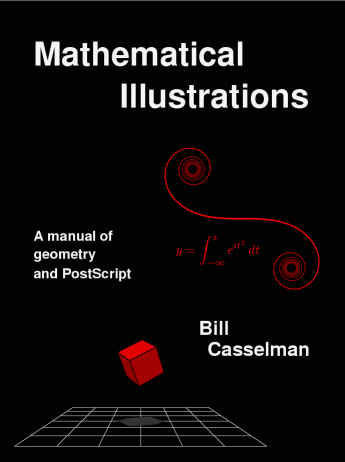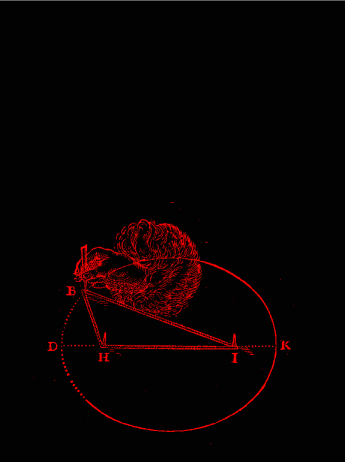|
Table of contents
|
|

|

Click here for information about this imagexxxxxxxxxx
|
|
This manual has been available on this site
since about 1996,
with improvements taking place frequently.
The current version has
been published as a book of about 350 pages
by Cambridge University Press.
By agreement with the Press, however,
it will remain posted on this web site.
Many improvements in the current version over previous ones
are due to the (anonymous) referees of the Press, whom I wish
to thank heartily.
I also wish to thank Lauren Cowles, of the New York office
of the Press, for much help with preparing the original
version for publication.
The paper edition appears also in Duotone red and black.
For information on obtaining the paper edition, take a look at the
Cambridge Press catalogue.
From January 1, 2004 on, no changes except simple error corrections will
be made to the main body of the text here --- at least for a while.
Corrections to both paper and web editions will be found below.
I am grateful to all those who have pointed
out errors or lacunae in
older versions of this manual,
and I hope readers will continue to send me mail
about what they find - both good and bad - at
cass@math.ubc.ca.
|
|
Copyright © 2005 by Bill Casselman.
Permission is granted for users of this
resource to make one copy for their own personal use.
Further reproduction is strictly prohibited
without the express permission of the copyright holder.
|
Introductory
This text is offered in PDF
format, but also in PostScript. To read the
PostScript files,
which are often faster to load,
you will need
a PostScript interpreter.
But you will need one in any event in order to
read the book fruitfully.
You can obtain Ghostscript and viewers at the
 GhostScript home pages.
You will probably want to set it as the program with which your browser reads
.ps files (of type application/postscript). GhostScript home pages.
You will probably want to set it as the program with which your browser reads
.ps files (of type application/postscript).
 Preface Preface
 Table of contents (for the entire text) Table of contents (for the entire text)
Chapters 1 - 15
 Chapter 1 - Getting started Chapter 1 - Getting started
 Chapter 2 - Elementary coordinate geometry Chapter 2 - Elementary coordinate geometry
 Chapter 3 - Variables and procedures Chapter 3 - Variables and procedures
 Chapter 4 - Coordinates and conditionals Chapter 4 - Coordinates and conditionals
 Chapter 5 - Loops and arrays Chapter 5 - Loops and arrays
 Chapter 6 - Curves Chapter 6 - Curves
 Interlude Interlude
 Chapter 7 - Procedures as arguments Chapter 7 - Procedures as arguments
 Chapter 8 - Non-linear transformations in
2D Chapter 8 - Non-linear transformations in
2D
 Chapter 9 - Recursion in PostScript Chapter 9 - Recursion in PostScript
 Chapter 10 - Perpective and homogeneous
coordinates Chapter 10 - Perpective and homogeneous
coordinates
 Chapter 11 - Introduction to drawing in 3D Chapter 11 - Introduction to drawing in 3D
 Chapter 12 - Rigid motion in 3D Chapter 12 - Rigid motion in 3D
 Chapter 13 - PostScript in 3D Chapter 13 - PostScript in 3D
 Chapter 14 - Drawing surfaces in 3D Chapter 14 - Drawing surfaces in 3D
 Chapter 15 - The regular polyhedra Chapter 15 - The regular polyhedra
Appendices
 Appendix 1 - Summary of important PostScript commands Appendix 1 - Summary of important PostScript commands
 Appendix 2 - Setting up your PostScript
environment Appendix 2 - Setting up your PostScript
environment
 Appendix 3 - Structured PostScript documents Appendix 3 - Structured PostScript documents
 Appendix 4 - Simple text display Appendix 4 - Simple text display
 Appendix 5 - Zooming Appendix 5 - Zooming
 Appendix 6 - Evaluating polynomials Appendix 6 - Evaluating polynomials
 Appendix 7 - Importing PostScript files Appendix 7 - Importing PostScript files
Epilogue
 Graphics style in exposition Graphics style in exposition
Supplement
 Another way to construct the regular polyhedra Another way to construct the regular polyhedra
 A better version of Hodgman-Sutherland A better version of Hodgman-Sutherland
Code samples and packages
The plural pictures means there are several pages.
Other references on PostScript
The following official guides from Adobe are available on line:
Other technical (very technical) documentation is also
on line at http://partners.adobe.com/asn/tech/ps/index.jsp
and http://partners.adobe.com/asn/tech/ps/technotes.jsp.
You can retrieve here, among other things, an earlier edition of the reference manual.
Other Cool Things:
Other reading on the use of illustration in mathematical exposition
Errata et corrigenda
(To appear soon)
|
 [ Bill Casselman's home page ]
[ Bill Casselman's home page ]
 [ Bill Casselman's home page ]
[ Bill Casselman's home page ]
 GhostScript home pages.
You will probably want to set it as the program with which your browser reads
.ps files (of type application/postscript).
GhostScript home pages.
You will probably want to set it as the program with which your browser reads
.ps files (of type application/postscript).